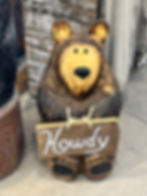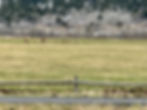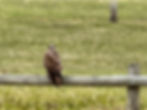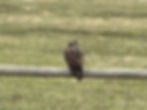What a scrawny moose you are!
- Deborah Kade
- May 8, 2024
- 7 min read
Well, I can now check off that I have seen a moose. However, this moose is very scrawny. The moose was quite far away so I'm hoping to get a better picture in the next couple days of another one.

"Moose (Alces alces), largest member of the deer family Cervidae (order Artiodacyla). Moose are striking in appearance because of their towering size, black color, long legs, pendulous muzzle, and dangling hairy dewlap (called a bell) and the immense, wide, flat antlers of old bulls. The name moose is common in North America; it is derived from the word moosh (“stripper and eater of bark”) in the Algonquain language of the Innu people of Quebec, Canada. In Europe, moose are called elk."

"Moose inhabit the northern parts of North America and Eurasia. In North America four subspecies are recognized, including the eastern moose (Alces alces americana), which inhabits eastern Canada and the northeastern United States; the northwestern moose (A. alces andersoni), which inhabits central Canada and North Dakota, Minnesota, and northern Michigan; the Shiras moose (A. alces shirasi), which inhabits the Rocky Mountains in the United States and Canada; and the Alaskan moose (A. alces gigas), which inhabits Alaskaand northwestern Canada."

"In addition to differences in geographical distribution, the different subspecies of moose are further distinguished by features such as size, pelage, and antler characteristics. The differences in regional body sizes appears to reflect adaptation to local conditions. The largest moose specimens are found in Alaska and eastern Siberia; there bulls weigh 600 kg (1,300 pounds) and stand 2 meters (7 feet) tall at the shoulder. The smallest moose are found in its southernmost populations in Wyoming and Manchuria, where large bulls weigh 300–350 kg (660–770 pounds)."

"Moose primarily exploit plant communities of deciduous shrubs that have been disturbed by flooding, avalanches, or forest fires. They are avid visitors to mineral licks. In winter they may also avidly consume conifers such as fir and yew. In areas of very deep snow, moose may tramp a system of trails called a “moose yard.” In summer they may also consume large amounts of aquatic vegetation. The large, mobile, sensitive muzzle appears to be a specialized feeding organ that allows moose to exploit the large stocks of submerged aquatic vegetation in shallow lakes and streams. Moose may dive and stay up to 50 seconds underwater while feeding. Even calves are excellent swimmers."
"Moose are bold and readily defend themselves against large carnivores. During calving season, moose cows face grizzly and black bears. In late winter when the snow is deep and moose cannot flee, they defend themselves against wolf packs. They choose hard, level ground with little snow for maneuverability, such as ridges blown free of snow or frozen lakes with a thin cover of snow. When hindered by deep snow, they back into dense conifers to protect their vulnerable inguinal region and lower haunches from attacks by wolves. They may then charge the wolves and attack them by slapping them with their front legs and kicking them with their hind legs. These blows are powerful enough to kill wolves."

"Moose normally escape predators by trotting at high speed, which forces the pursuing smaller predators into expensive and tiring jumping but which costs a moose relatively little energy. It readily comes to bay but on its terms: it chooses low water where wolves are hampered in their movements. Although moose are excellent swimmers, it does not choose deeper water, because northern wolves have relatively large paws and so are also excellent swimmers. Predation by wolves and bears removes the infirm but may also severely deplete healthy calves, despite the spirited defense of their mothers."
"Moose mate in September so that the calves may be born in June to take advantage of spring vegetation. The antlers are shed of the blood-engorged skin called velvet in late August, and the bulls are in rut by the first week of September. Rutting bulls search widely for females, but the bulls may also attract females with the smell of their urine. They paw rutting pits with their forelegs, urinate into them, and splash the urine-soaked muck onto their hairy bells. Cows in turn may call to attract bulls. Actively rutting bulls appear to receive more than 50 punctures per mating season, but they are protected by a thick skin on the front and the neck. Rutting is expensive, as bulls lose virtually all of their body fat and their festering wounds must heal."
"Because of their large body size, moose have a long gestation period of about 230 days. Twins are not uncommon. The young are born tan in color, which contrasts sharply with the dark color of adults. They grow very fast but still require maternal protection against wolves in winter. They are driven off by their mother shortly before she gives birth again. The dispersed yearlings roam in search of new living space.
Young calf moose in human hands tame readily and emerge as surprisingly intelligent, mischievous, but utterly loyal creatures. As mounts and beasts of burden, moose are superior to horses in muskeg and taiga. In the late 19th and early 20th centuries, moose became scarce owing to severe exploitation in unsettled times in Eurasia and to uncontrolled market hunting in North America. However, they responded readily to protection and management. Today moose are abundant in Eurasia and North America and are a cherished game animal. (The muzzle of the moose is considered a delicacy.) However, with the restoration of a predator fauna in North America, moose are again declining."
We heard that 15 inches of new snow fell last night at Yellowstone. Happy we left before it came down. They were hoping to open the southern entrance from Yellowstone to the Tetons some time this weekend. Wondering if it will happen now that they received more snow.
Snowed some during the night here at Teton Village. Trees looked quite pretty with a little snow sticking to their branches.





Interesting patterns








Had breakfast at Persephone this morning. Don't you just love their philosophy....
"We live as we bake and we bake as we live: With heart, hard work and creativity. Through
Persephone, we have found like-minds in the mountains, kindred spirits who care about food and design, nature and art. On our deck, we delight in overhearing conversation topics as wide and wonderfully Jackson as new albums and bear encounters. Every day, we draw inspiration from the deep well of talent in the Tetons, our team of loyal local employees, and the creativity of those who helped us realize our vision. Visit any of our three Jackson Hole coffee shops and cafes for a taste of the Tetons."
Michael and I each had a cinnamon brioche and kouign amann. So delicious! Tasty! Yummy! Scrumptious! I think you get the idea of what we thought of the pastry.





"Some Bretons claim that this signature treat (which is pronounced “queen ah-MAHN”), made by artisans across the region, is the fattiest pastry in the world. Epicure & Culture calls the kouign-amann Brittany's equivalent to the Paris croissant."
Michael has made kouign amann at home. It takes quite a long time to prepare but it certainly is worth it.
Took a short drive heading north out of town.


A few elk way off in the distance. More were grazing below the ridge.




Temperatures in this area to increase over the next few days. Maybe snow will start melting and fill the rivers and streams.

The four elk antler arches guarding the corners of Jackson Hole’s George Washington Memorial Park, more commonly called the Town Square, have become well known icons to the town’s many visitors.


It’s a toss-up whether the Tetons or the elk antler arches at the four corner of Jackson's Town Square are more photographed by visitors. When the local Rotary Club erected the first arch in 1953, it had no idea it was creating an icon. But, the arch was an instant hit with visitors, so the club started planning for additional arches, one on each corner. These were built between 1966 and 1969. (The southwest corner was the first to get its arch.)

Today’s arches are not the original ones, though. Elk antlers have a life span.

Ideally, the antlers should be replaced every 30 to 40 years.
"The oldest arch, the southwestern one, was rebuilt first in 2007. Because this arch is the most popular one for photographs, it wasn’t just replaced, but also moved. It was only a matter of time before someone walking backward to take a photo stepped into traffic and was hurt. The southeast arch was redone in 2009, the northeast corner in 2011 and the northwest one in 2013. Each time, workers disassembled the old arch just after Memorial Day and had the new one up by the Fourth of July."

"Making an elk antler arch is a labor-intensive process. Workers weave antlers—each of which weighs from 5 to 10 pounds—together around the steel frame. Antlers go up one at a time. By the time an arch is done, it’s a mosaic of 10,000 to 12,000 pounds of antlers. Some of them are screwed down to add extra support and prevent vandalism."

"About 1,000 to 2000 pounds of the antlers in each arch came from the Jackson Hole Boy Scouts, who pick them up on the National Elk Refuge each year. The rest were bought from antler dealers in the Mountain West. The new arches should be good until 2040 or so."
Decided to do a little shopping. The weather for the next two days is supposed to be improving so I would rather take pictures than shop.

Wooden sidewalks. Feels like a Western town.

"Bears are everywhere"




Old Town Scottsdale has a bucking bronc as a symbol.


I should have recorded this bird squawking away!


Grab a flag when you cross the street so you can be seen!


Forgot to bring the telephoto lens. Elk are so far away.



Today was a day to photograph birds. Unfortunately, I'm not sure if it a falcon, hawk, or falcon hawk. Can anyone tell me what kind of bird this is? I would appreciate the help.
Yes, it is looking at me.



Wished I could have caught it in flight.

Looking out over the field. Well, it is supper time.

Michael wanted pizza tonight. The people at the reception desk recommended Cutty's Bar and Grill. The staff were super friendly and the food was very tasty.Wonderful suggestion.

Had a salad and "the works" pizza. Michael also had a Guinness on tap. I had a sip and it definitely had a chocolate/toffee taste. The owner of Cutty's is from Philly and you could tell by the banners, etc. This definitely is a place the locals gather.

Clouds and fog are starting to lift. The temp should increase tomorrow. They are predicting partly cloudy skies. Hoping to see the Tetons.



This elk almost decided to cross the road in front of the car ahead of us. It waited by the side of the road so I could take a picture, though.

Love the coloring of the ears and those expressive eyes!


Back to the Teton Club at Teton Village.


Another day comes to a close. Until then....good night.
